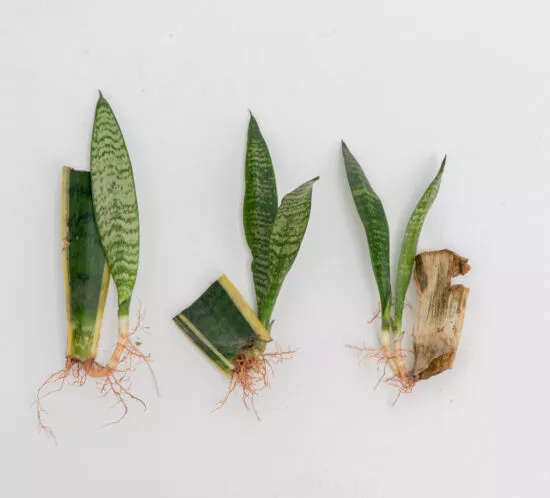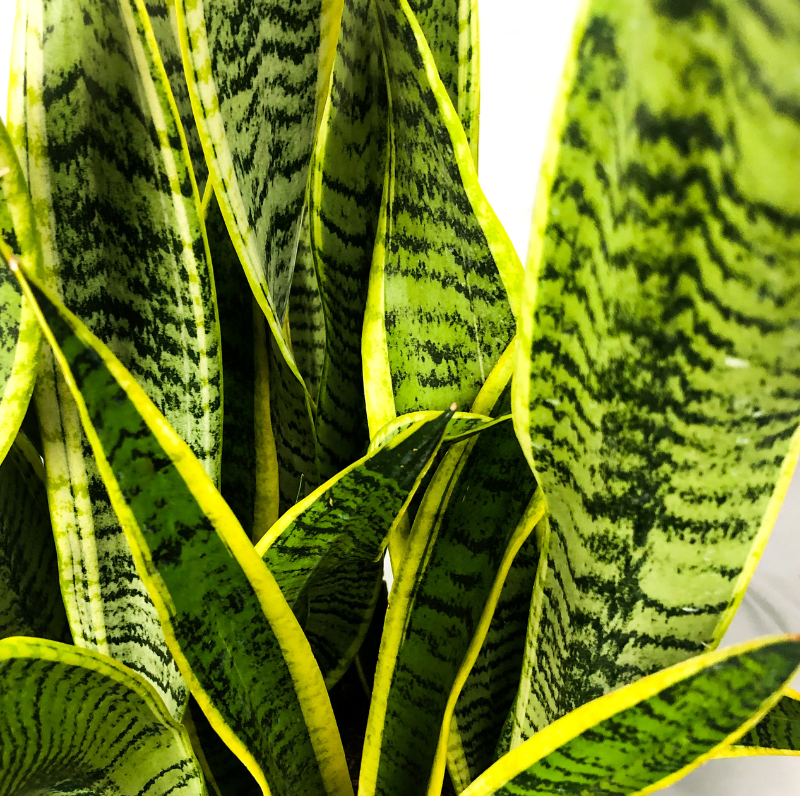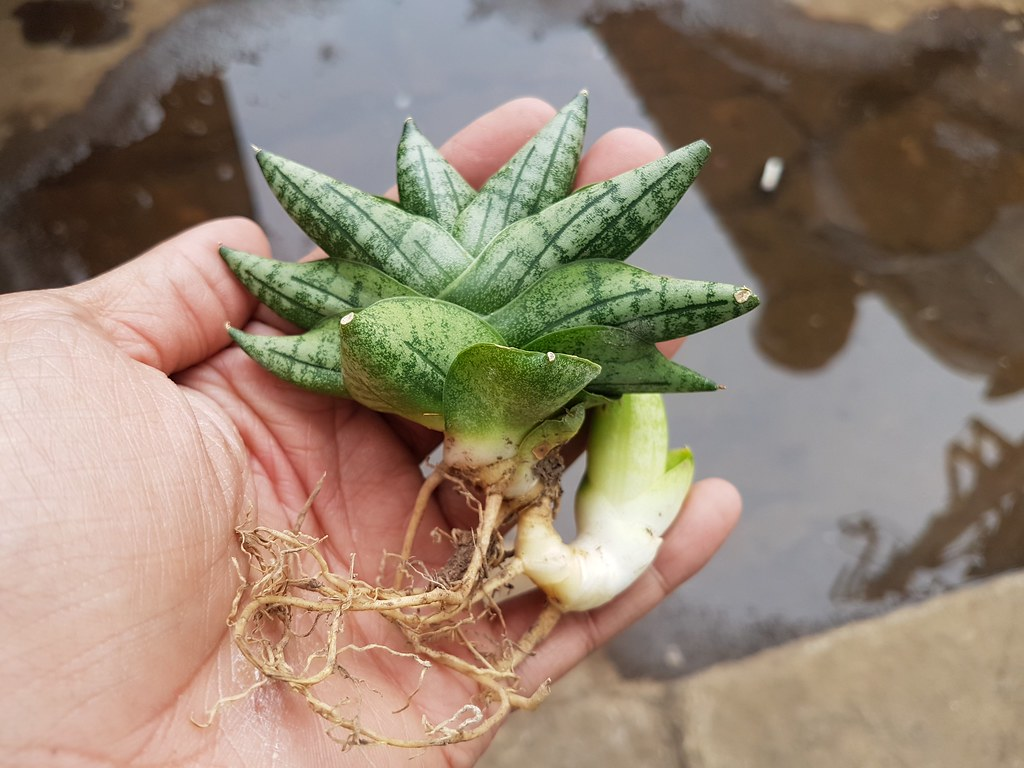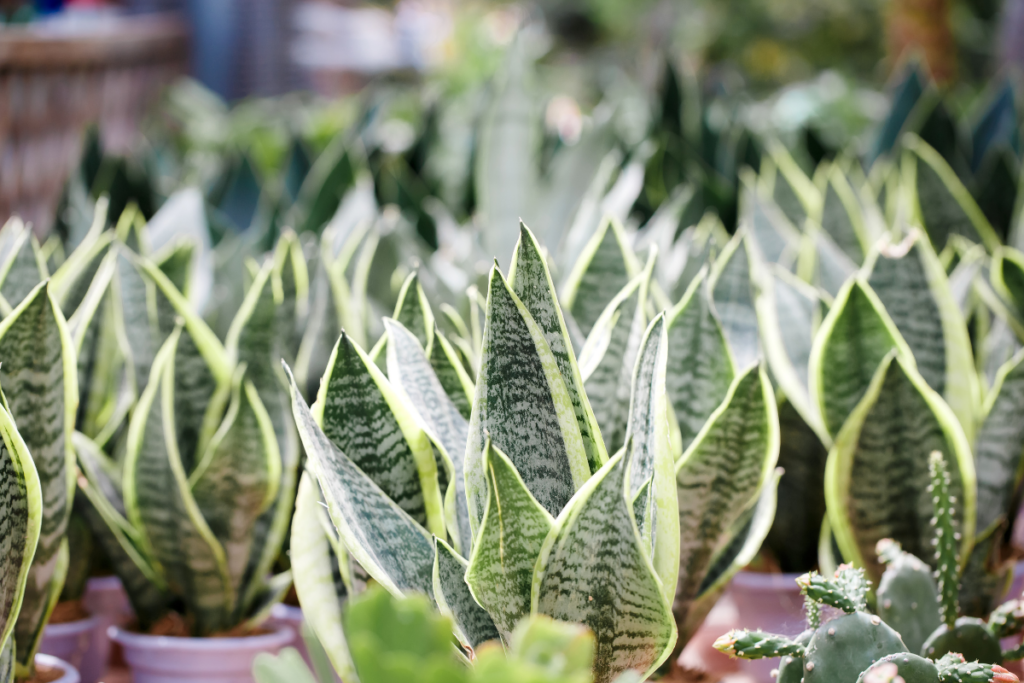Soil is where most of the plants that we see are planted. In the wild, this is how things always happen. However, plants can today be planted in water and still produce outstanding results because of the development of several horticultural techniques and effective propagation procedures. The question we will answer in this article is can snake plants grow in water.

The well-known houseplant, Snake Plant or Sansevieria, is one that can be propagated and grown in a pot of water. Like the majority of plants, they are typically grown in ordinary soil. However, many people have been growing this lovely plant in water-filled containers for propagation purposes.
Unquestionably, a plant growing in water has a peculiar and fairly astonishing appearance. You have therefore come to the proper place if you are also interested in growing your Snake Plant in water.
We’ll assist you with putting your first Snake Plant in the water, and we will walk you through the process step-by-step so you can advance properly.
How To Grow Snake Plants In Water?

A fun technique to give your plant collection some oomph is to grow Snake Plants in water. It’s another inventive and artistic method to propagate, as well as, display your plant. This will undoubtedly start a discussion among your peers.
The secret to successfully growing plants in water is taking the appropriate precautions to protect your plant. If you don’t know how to accomplish this, we’ll show you how to do it quickly so you won’t have to worry about making mistakes.
Cutting the plant into several portions or propagating a new snake plant from a single leaf of the mother plant are the two most popular methods to grow snake plant in water. Both approaches work well and take only a few minutes to complete. Let’s examine both of the procedures below.
RELATED: Snake Plant Dying: How To Revive It And More Helpful Tips
First Method: Snake Plant Leaf Divisions

1. Select Glass Jars Or Containers
Find a glass container to use as the initial stage in growing a plant in water. Find a container that complements your home and is not only practical but also aesthetically beautiful if you plan to put it on display. Many people use little vases to conserve room, but if you want, you can also use a tall, sleek glass.
The greatest container for growing plants in water is one made of glass since you can see the roots easily. Furthermore, it is simple to determine whether the water has to be changed or whether any insects are already thriving in it.
If you’ve already chosen a glass container, put water in it. Because your plant might be sensitive to chemical traces in tap water, avoid using it. You can also use rainwater or distilled water as an option.
Chlorine and fluorine, two hazardous pollutants that might harm your plant, may be present in tap water. Therefore, if it is possible to avoid using it, please do so to ensure that your Peace Lily will grow successfully in water.
2. Examine Your Snake Plant
Before deciding to propagate your snake plant, check to make sure it is healthy. You’ll be cultivating the snake plant from its rhizomes using this technique; hence choosing a healthy mother plant is crucial. Rhizomes are connected to the root system and are found at the base of the plant.
If you see red patches, drooping leaves, or yellow leaves on the existing plant, it is a sign that your plant is stressed and unfit to serve as a mother plant.
It is important to remove signs of damage using any available cutting instrument. To prevent future infection of plants within your home, spray the specimen with pesticides or insecticides first, or better yet, choose a healthy specimen.
Remove the plant from the planter if the leaves appear to be in good condition.
3. Examine The Plant Roots
Remove the soil from your plant and examine the roots closely to make sure they are healthy. They may be signs of root rot if they are mushy, wet, or have an offensive odor. In that situation, before using the plant for replication, you must restore its health.
4. Divide And Cut The Leaves
The snake plant can be divided in a few different ways. Grab one of the leaves by the root and pull it apart from the plant; this is a more frequent and secure method. This step just needs five seconds to complete.
To avoid damaging the shoot in the process, be cautious to wiggle the shoot free rather than pulling it off. The alternative method is to remove the leaf at the end of the shoot with a paring or gardening knife.
5. Place The Leaf Cuttings In The Jar
The next step is to put the freshly separated leaf cuttings in a glass jar with water. A leaf cutting should be submerged in water up to the stem, about an inch deep. Make careful to keep the jar in a warm, sunny spot in your house until the roots can be seen coming out of the bottom of the shoot.
To prevent damage, gently place your plant on your container after dipping it. Due to the existence of several bacteria that flourish in damp settings, a damaged plant can swiftly deteriorate when submerged in water. Damage will make it difficult for your plant to recover.
But first, make sure to clean your specimen of any dirt or debris, paying careful attention to the roots. Numerous organisms that like a wet environment can be found in the soil and may eventually infect and harm your plant. To remove any remaining dirt, simply run it under running water. Then you’re ready to go.
Although it’s quite simple, this step is essential to the success of your venture. Make sure your growing plant has the proper climatic conditions because a partially buried plant cutting is not optimal.
The roots may not form for several weeks, so during this period patience will be a virtue. In order to keep the water clean and fresh, be sure to refresh it as needed.
RELATED: Growing Snake Plants Outside: Can They Thrive Outdoors? Answers and More!
6. Frequently Change Water
Your Snake Plant cannot be allowed to grow for several months in the same water. Your plant will be harmed if the water is tainted or becomes infected with insects. To guarantee the survival of your Sansevieria Plant, you must occasionally change the water.
Aim to change the water twice a month or once every two weeks for the best effects. By using this frequency, you can prevent drying out of the roots and stagnant water.
Water can be insufficient to support the growth of your plant because it also evaporates, especially in warm weather. This is the rationale for why you should actively change the water frequently.
One thing to keep in mind is that you must use room temperature water. Your plant might be harmed by hot or cold water. Use distilled water or rainwater instead of tap water whenever possible because the latter may still contain minute amounts of fluorine and chlorine.
7. Place It Under Bright, Indirect Light
Plants need light to survive, whether they are grown in water or soil. For your plant to flourish, the right lighting conditions must be provided. A bright light that is indirect provides your Snake Plant with the finest lighting conditions for a greater chance of survival.
Avoid placing it in an area where there are long periods of direct sunshine, as Snake Plants cannot withstand extremely strong UV rays. Too much light exposure can harm your plant. An overexposed Sansevieria plant may develop foliage burns or leaf yellowing, which in severe cases, may result in death.
8. Plant It Into The Soil
You can cultivate rooted snake plants in the soil or in a pot to continue growing after you can see the roots forming at the bottom of the stalk. When you use a pot, just ensure it has enough drainage holes.
You can keep your snake plant in water if you’d rather not use soil as long as you add some medium to the container, like pebbles, stones, or beads. You’ll observe the emergence of a brand-new snake plant in a few months.
Second Method: Snake Plant Cuttings

1. Examine Your Snake Plant Specimen
For this procedure, you need also carefully inspect the snake plant to make sure it is healthy and not under stress. A new plant that is propagated from a sick mother plant will struggle to establish a strong root system and most likely die within a few days.
Make sure to inspect the plant for any spots or webbings on the leaves, which could indicate fungus growth or a pest infestation. Additionally, you should ensure that the plan’s foundation is strong and sound.
2. Divide Snake Plant Into Three Parts
The plant should then be divided into three sections using your shears. You don’t want to introduce any germs or fungi to the cuttings, so make sure your shears are clean and sterile before you begin.
Keep the cuttings upright at all times, so don’t plant them upside down.
3. Put Your Cuttings In Selected Glass Containers
The cuttings should all be put inside a glass container. Next, fill the jar with water to a depth of about two inches, covering the cuttings at the bottom.
After that, plant the cuttings in a warm, sunny location and check on their root development every day. Always remember to fill the jar with new water, and rinse it if it gets soiled. The cuttings can either be planted in a pot or left in the water until they develop into plants. If you desire, you can even put them in soil.
How Do You Maintain Snake Plant Hydroponics?
When employing this growth technique, you should be aware of how to take care of your snake plants if you intend to keep them in the water. Here are some pointers to get you started with hydroponically growing your snake plants.
1. Always keep a close eye on the snake plant’s water level. Daily evaporation will cause the water level to drop, but that’s okay. Recall that snake plants benefit from neglect. Having said that, you don’t want it to dry out completely because that could cause the plant to get dehydrated.
2. Because of the low light levels in the winter, snake plants, like many other plants, don’t grow as much. You won’t need to water the plant frequently during this period.
3. Instead of just topping it off, try to replace the water in the pot at least twice a month. This will maintain it healthy and clean while also preventing diseases.
4. It may indicate root rot if you find that the water in the pot has turned stinky or cloudy. When growing snake plants hydroponically, root rot is a possibility that needs to be actively monitored. Replace the water right away and trim off any dead roots to try to rescue the plant if you notice any signs of root rot.
RELATED: Snake Plants: Can They Survive Under Direct Sunlight? Top Answers and More!
Frequently Asked Questions
How Much Time Does A Snake Plant Need To Root In Water?
If a snake plant cutting or snake plant leaves are grown using water, it can take them anywhere between 2 and 2 1/2 years to develop young roots.
Sometimes, especially if you utilize dirt rather than water, it can take considerably longer. This is because you must then wait a few more weeks for the roots’ pups to form after the roots have started to take shape.
Should A Snake Plant Be Grown In Water Or Soil For Optimum Growth?
Growing a snake plant in a soil medium is the more conventional technique of doing so. This is not to say, nevertheless, that aquatic reproduction is ineffective.
Simply put, the cuttings’ establishment of a root system can take a little longer. However, it is important to note that establishing a new snake plant is quicker when done in sections rather than by chopping off individual leaves.
How Can Cuttings Be Encouraged To Grow Roots?
Giving plant cuttings’ roots the greatest possible growing conditions is the best technique to promote the formation of roots.
To encourage the growth of the cuttings, avoid exposing them to cold drafts or direct sunlight and check to see if the growth nodes on the bottom of their shoots are active. You may also want to think about adding a rooting hormone.
Last but not least, it is preferable to plant the cuttings somewhere where they will receive a 50/50 mix of partial sunlight and shade.
Warm, humid surroundings with an average humidity of about 50% are ideal for plant cutting growth. The growing medium must be kept moist to ensure that the roots are receiving the nutrients they require to grow.
How Are Snake Plants Propagated?
Taking your snake plant out of its pot and dividing it into three or five portions is the simplest and quickest way to multiply it. Either your hand or a precise paring knife can be used for this.
Make sure to gently tug on the plant leaves rather than tearing them apart in order to split them at the leaf’s base. Before propagating snake plants, always check the roots to make sure they are strong enough to produce a new plant.
Read more on how to correctly propagate your Snake Plants.
Where Can Water-Grown Snake Plants Be Kept?
On center tables in jars or small vases, snake plants in water would look lovely. For an attractive appearance, place them on tabletops, dining tables, and workstations.
Final Thoughts

Using water to grow your Snake Plant is a highly creative and unusual technique to develop a plant. Even though it may seem complicated, growing plants in a water setup is actually not that tough if you follow the right procedures. You will undoubtedly enjoy doing this at home.
Just keep in mind that Snake Plants grown in water differ from those raised in land. Hydroponic Snake Plants won’t live as long as your plants that were grown in soil, as snake plants thrive best in a soil medium. However, you also get a whole other level of aesthetic appeal, which is likely to generate discussion.
If you found this post helpful, please leave a comment below and tell us about your experiences growing plants in water. Tell everyone about your experience with plants!
Editor’s Recommendations
Snake Plant Roots: What To Look For In A Healthy Sansevieria Plant
Watering Snake Plants: How Often To Water and More Helpful Tips
Repotting Snake Plants: Top Tips on Proper Snake Plant Repotting







